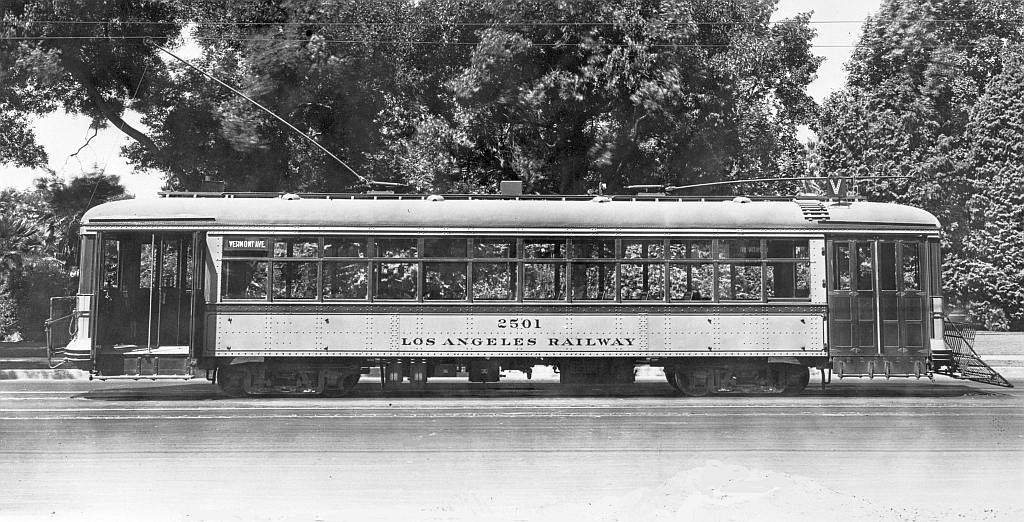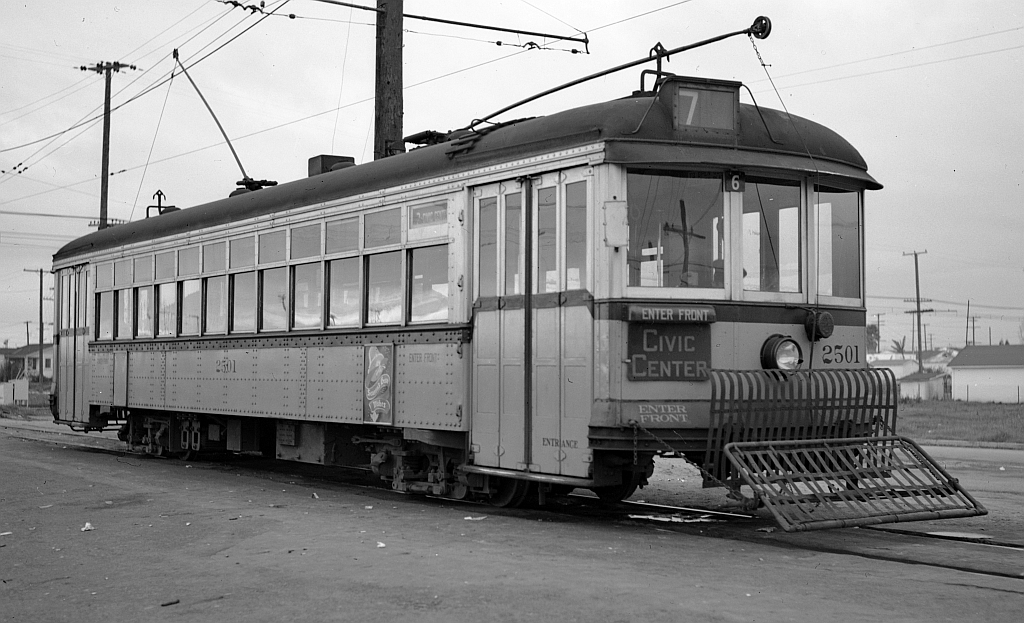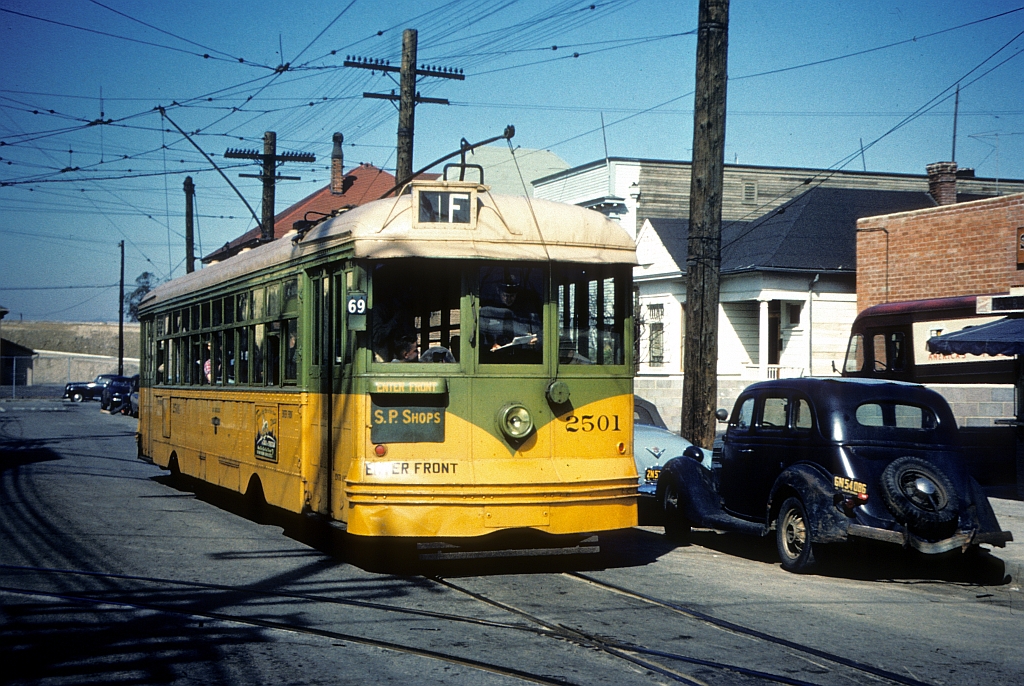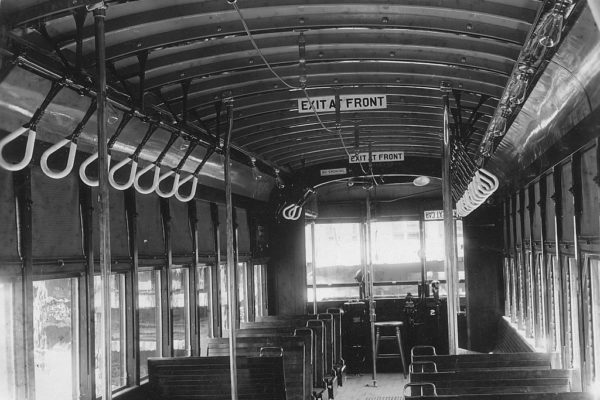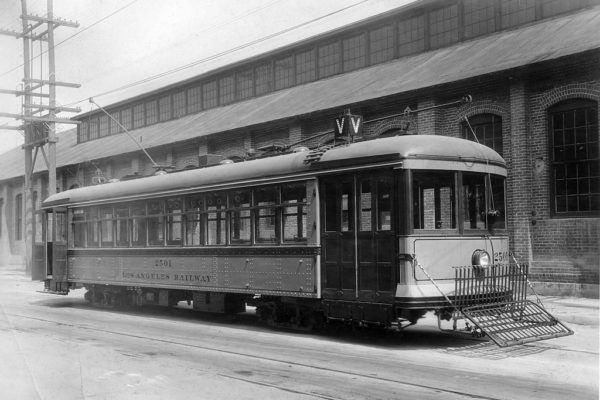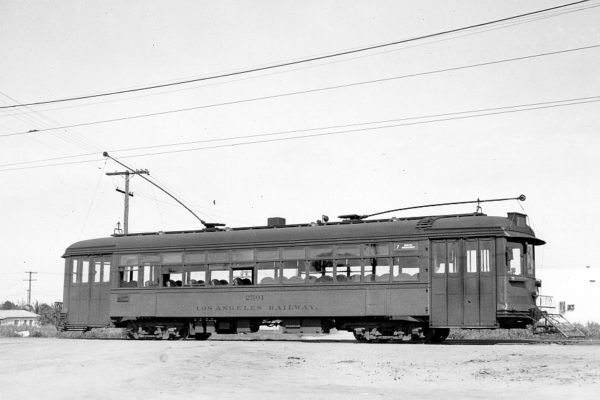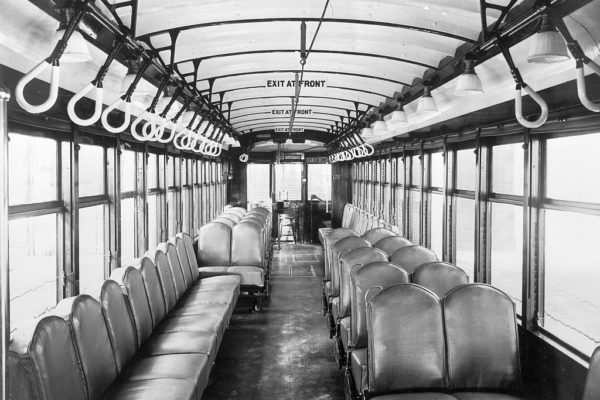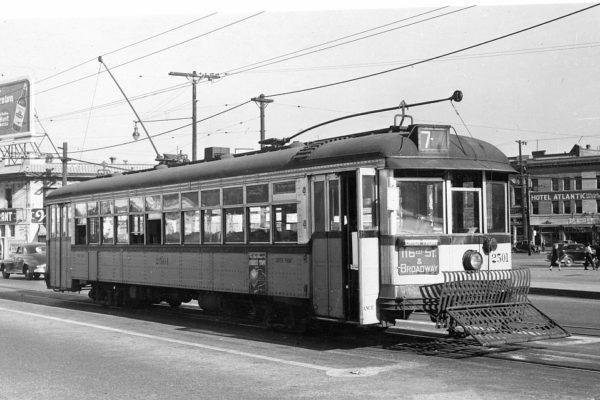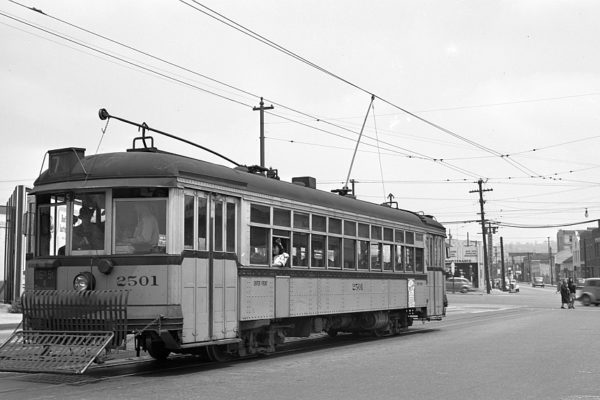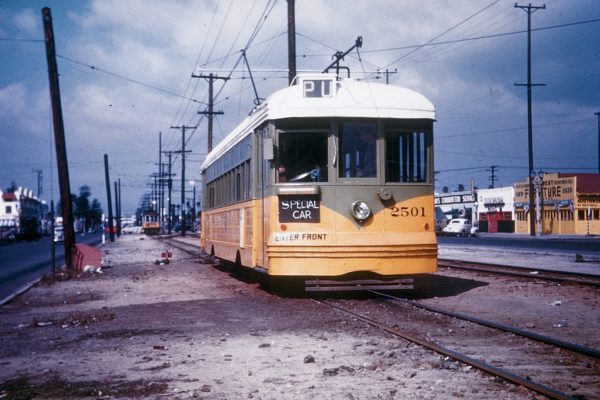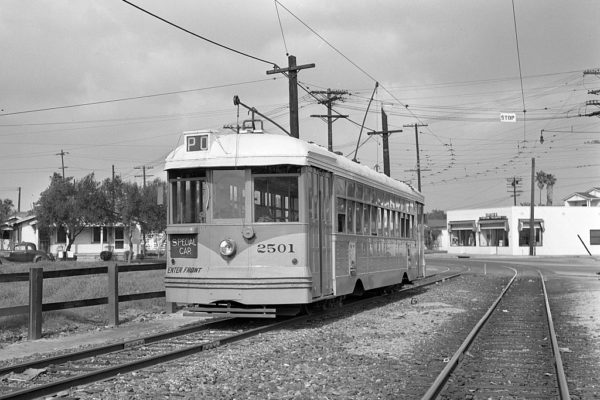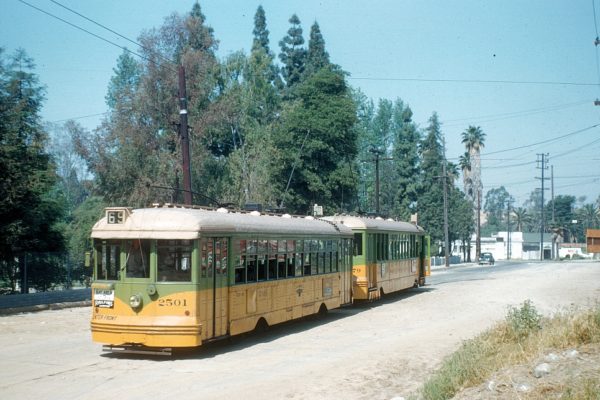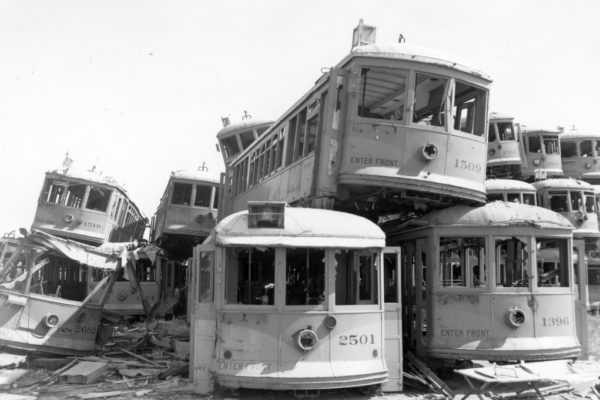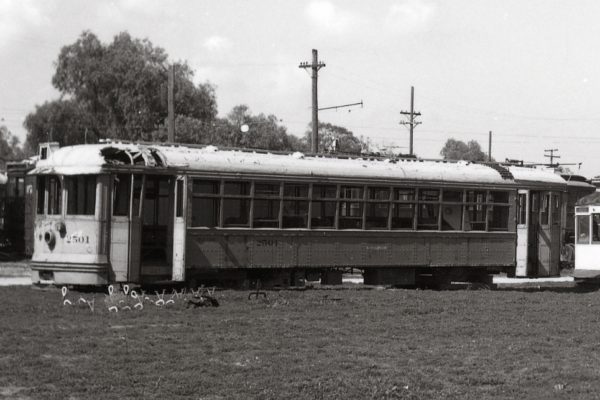During the early 1920’s, the newly re-incorporated Los Angeles Railway Corporation began a passenger equipment upgrade program, actively buying new steel bodied cars to displace the antiquated wooden bodied cars inherited from the old Los Angeles Railway Company. This campaign brought the Type H cars, 1201-1450. At the same time, The LARy rebuilt sixteen older cars into the new Type F cars (1151-1166) and also made 60 Type K cars (1501-1560), which were essentially wooden copies of the Type H cars. Looking into the future, another new class of cars would be needed. By 1925, the fashion was growing toward all enclosed cars with a low-floored design riding on small diameter wheels. The LARy engineers worked with the St Louis Car Company to create a prototype experimental car to test on the LARy system.
The result was car Type L car 2501, built by St Louis Car Company in 1924-25 and delivered to the LARy in March of 1925. The external appearance was quite similar to the Type H and K cars with the exception of the cars low stature. Mechanically, the car was rather different: 2501 rode on 26 inch wheels (compared to the standard LARy 30 inch) and featured variable load braking, where the braking power varied depending on how much weight the car was carrying. This feature was short lived and disabled in December of 1926. 2501 was also a new experience for the operator as it was delivered with automatic folding doors and steps, a feature later standardized on the LARy fleet.
Car 2501 proved successful during testing and initial operation, with the exception of overhang on turns. On the other LARy cars, the trucks were placed as close as possible to the car ends to limit overhang. The trucks on 2501 were relatively closer to the center of the car, causing extreme overhang on the tight curves at street intersections. The solution was to use 2501 on a route with few curves. 2501 saw regular service throughout its career on the 7 Line, from Civic Center in Downtown Los Angeles to South Los Angeles via the rather straight route along South Broadway. While successful, the design of the Type L car was not adopted, leaving 2501 the sole member of its type.
Through the 1930’s and 1940’s, 2501 saw continual service on the 7 Line, including the sale of LARy to Los Angeles Transit Lines in 1945. LATL line abandonments in the 1940’s left many cars surplus, especially oddball cars like 2501. September 10, 1950, 2501 was removed from regular service and placed in storage. From that point the car was only used on occasion for railfan excursions. In 1955, LATL discontinued many of its routes, resulting in a mass retirement and scrapping of cars, including 2501. Most cars were sold National Metals and scrapped at their facility on Terminal Island. The streetcars were stacked in a pile four cars high, with 2501 at the bottom of the pile. Stripped of its mechanical parts and sustaining body damage, 2501 remained for several years at National Metals before being rescued by members of the Orange Empire Trolley Museum, in Perris, California. Today, the body of 2501 is in storage waiting for restoration. Generous donations to the Southern California Railway Museum “Yellow Cars” fund keep the museums yellow cars operating and facilitate future restorations of cars, such as 2501.

